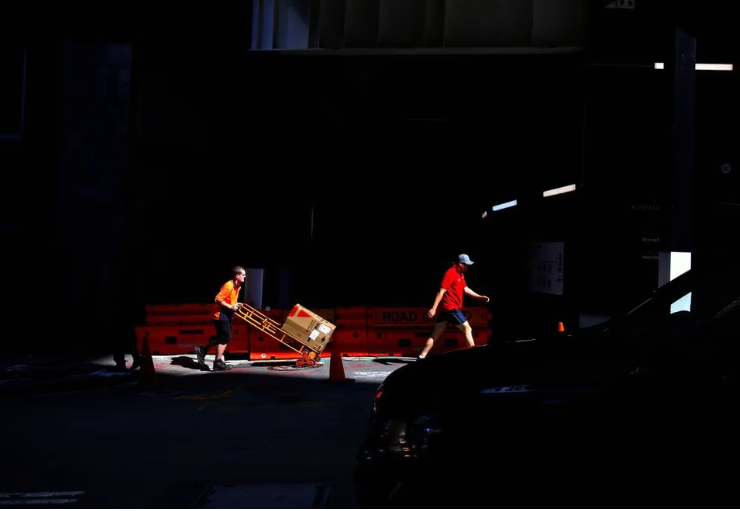
SYDNEY, (Reuters) – Australia employment surprised in January by falling for a second straight month while the jobless rate jumped to its highest since last May, a soft result that could lessen pressure for further aggressive interest rate hikes.
Figures from the Australian Bureau of Statistics on Thursday showed net employment fell 11,500 in January from December, when they dropped a revised 19,900. Market forecasts had been for a rise of 20,000 in January. The jobless rate climbed to 3.7%, when analysts had looked for it to hold at 3.5%, and hours worked fell by a sharp 2.1% as more workers than usual took annual leave in January.
Investors reacted by pushing the local dollar 0.4% lower to $0.6879, pricing out the risk of a fourth rate hike while short-term bonds reversed earlier losses to be up 3 ticks at 96.550.
Three-year government yields slumped 6 basis points to 3.461% while 10-year yields fell 7 bps to 3.789%. Bjorn Jarvis, ABS head of labour statistics, said seasonal factors could explain some of the surprise dip, apart from a larger-than-usual increase in unemployed people.
“January is the most seasonal time of the year in the Australian labour market, with people leaving jobs but also getting ready to start new jobs or return from leave,” said Jarvis.
“This January, we saw more people than usual with a job indicating they were starting or returning to work later in the month.” The softness in the labour market, if sustained, could take some pressure off the Reserve Bank of Australia in its inflation fight. The RBA predicted the jobless rate would only edge up to 3.6% by June and 3.8% by the end of this year.
Governor Philip Lowe on Wednesday conceded he did not know how high unemployment needed to rise to get inflation in check, but policymakers would like to keep the jobless rate at 4.5%, below where it was before the pandemic, to engineer a soft landing.
Investors are still leaning towards another quarter point hike when the RBA Board meets in March, with expected strong wages growth data due next week likely to reinforce the hawkish bias.
Most now expect the cash rate, currently at 3.35%, to peak around 4.1%, suggesting at least three more hikes. That compared with 4.2% before the data release.
“We have been expecting an uptick in the unemployment rate as the economy slows a bit as the obvious consequence of a slowing global economy mixed with the impact of interest rate rises here in our own economy,” Australian Treasurer Jim Chalmers told a media conference after the data release.
“The expectation… is our economy will slow a bit more and unemployment will tick up a bit more in the coming months.”
Sean Langcake, head of macroeconomic forecasting for BIS Oxford Economics, said the data does not provide any conclusive evidence of a cooling labour market, adding seasonal factors could boost employment and weigh on unemployment in February.
“But it is clear the market is tracking sideways, albeit in a very tight position,” said Langcake.






